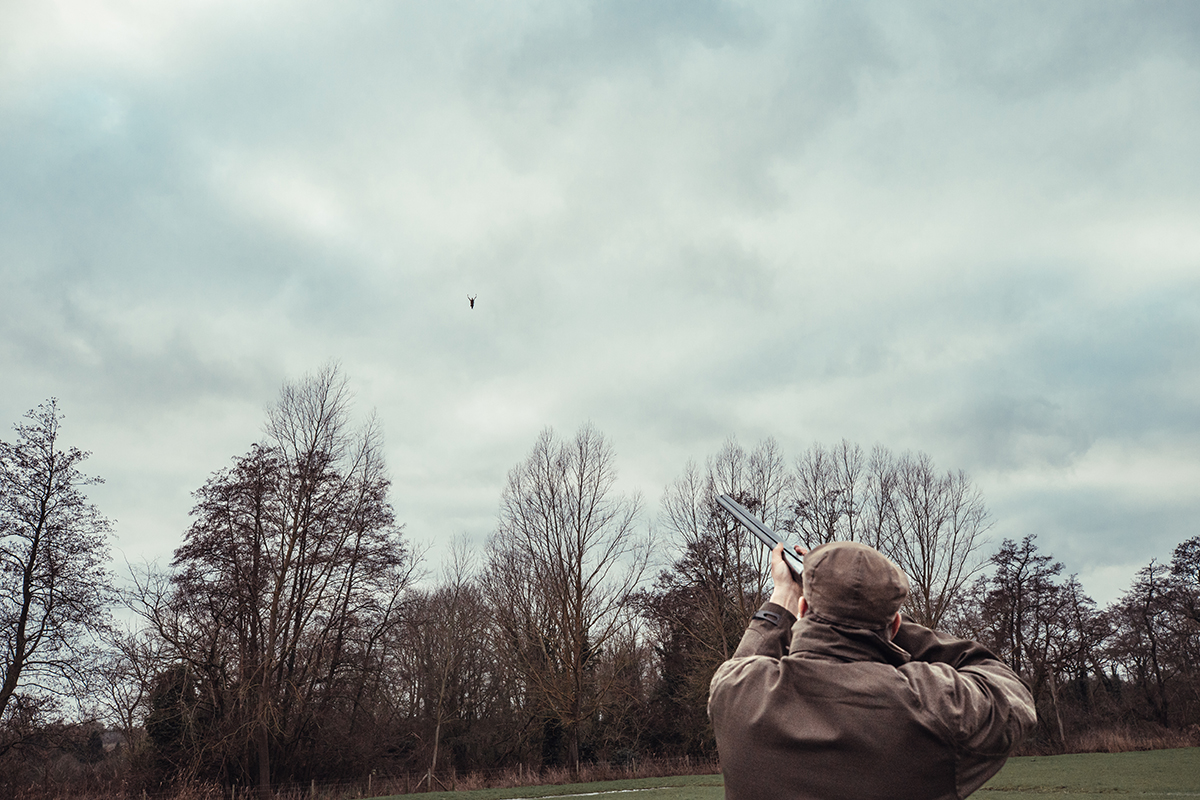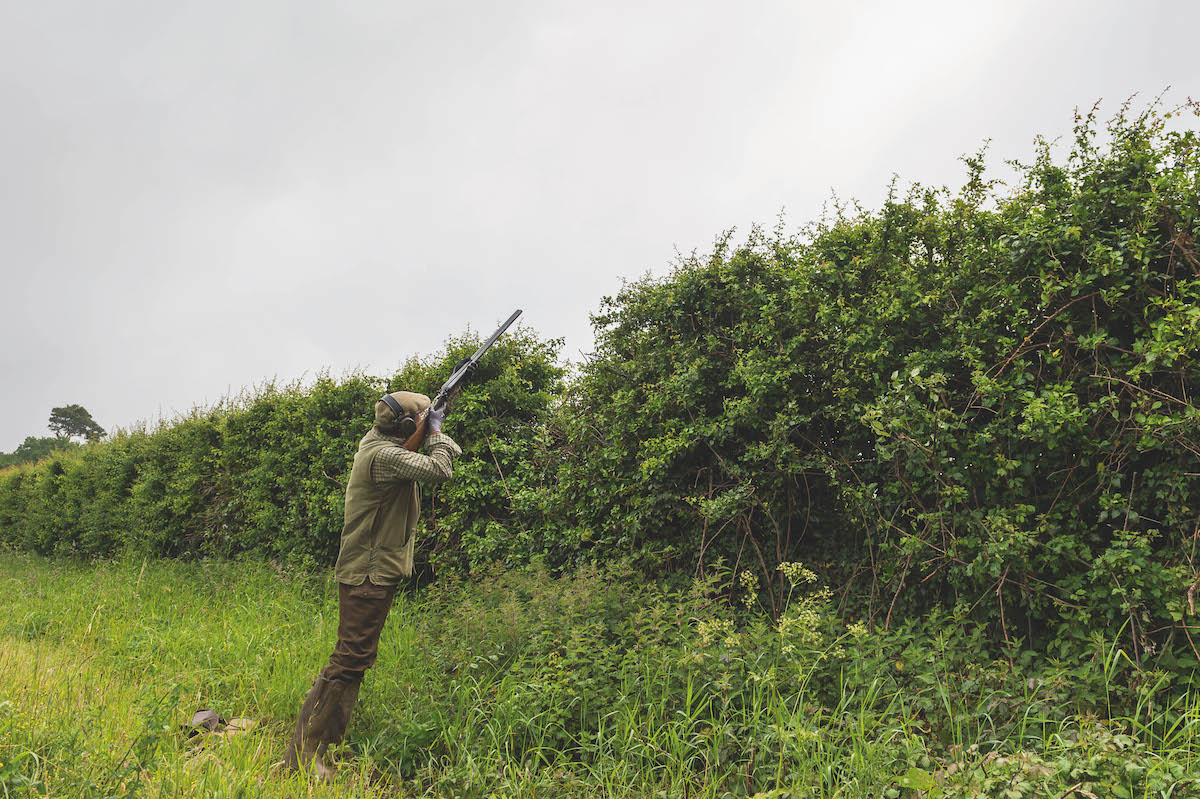The role of the wild-bird keeper in rewilding
Keepers have been ‘rewilding’ long before it became fashionable and so many species benefit from wild bird shoots, says Richard Negus

The word ‘balance’ is key to the success of Britain’s wild bird shoots
As I lay hedges, my mind is prone to wander into flights of fancy. I had a daydream recently as I was wrestling with the spiky matter of a blackthorn. In my imagination, I had been invited to dine, as a last-minute replacement guest, at a new and notably costly plant-based restaurant.
My host was a financier-turned-amateur-farmer with a penchant for extinct carnivores. The fellow guests boasted unimpeachable, in their opinion, environmentalist pedigrees. Three wrote opinion pieces, two proudly bore scars on their palms, a recent legacy of a glue-related encounter with a Bentley in a Knightsbridge mews.
The table talk meandered along. Terms such as “right to roam”, “charismatic megafauna” and “trophic cascade” rolled around while the assemblage tucked into faux chicken nuggets and nearly-lamb cutlets. Our host turned to me. “Rewilding?” he enquired. “Oh yes,” I replied, “I was into that before you lot made it a laughing stock.”
It was at this point I broke from my reverie, realising with a start I was knee deep in a ditch and needed to sharpen my billhook.
Rough and tumble
The truth is, shoots that rely largely or wholly upon wild stocks for their sport have been champions of ‘wilding’ land for generations, long before the likes of Messrs Goldsmith, Monbiot and Burrell jumped on the bandwagon. The simple reason for this is that pheasants and partridges would rather live in the rough and tumble of rough and tumbly land than the nigh-clinical landscape initiated by modern farming practices.
My friend and business partner Richard Gould, who knows more about wild gamebirds and their management than most, has a mantra: “The gamekeeper is the farm manager’s conscience.” It is probably accurate. The farmer predominantly sees land in one-dimensional, human-centric terms, as a medium for growing crops or fattening livestock. This is because his job, and a very important role it is, is to feed the likes of you and I.
The wild-bird keeper — who, like the farmer, makes his living from the land — views it in a more holistic way than that of the agrarian. The keeper sees land in terms of habitat, food and wildlife. This trio of natural elements is to the farmer largely unimportant and, to be honest, quite often a hindrance to his business. To the gamekeeper, however, this is his business.

Controlling predators and pests on shoots has a knock-on effect on many native species
These wild ingredients that a keeper requires, encourages and increases on his beat are unarguably identical to the outcomes sought by the exponents of ‘rewilding’, those diners in my imaginary soiree at the vegan restaurant. The question therefore must be, why don’t these new-entry champions of rewilding hold up the wild-bird keeper as a hero, rather than denigrating him as the scourge of society?
Undoubtedly, the chief reason is that they believe wild land needs no keeper nor manager — no human hand need intervene. In the rewilder’s world, nature will heal itself, given time and seemingly a few million pounds garnered from your father’s trust fund. While this theory is partly sound, like most theories it doesn’t stand up to a lot of real-world scrutiny.
First, farmers have to continue farming because if they stop we will all starve. So the notion of achieving landscape-scale ‘wilding’ via ceasing agriculture simply won’t fly, largely due to the British consumer’s reluctance at either starving to death or living off a diet of laboratory-grown meat substitutes, with a few insects thrown in to spice things up.

Shoots provide margins, strips, hedges and woods, the closest thing to wilderness we can get
Extinct
Secondly, the UK has travelled so far in evolutionary terms that the ‘natural order’ is long gone. Countless non-native species are now present, our native apex predators are extinct — apart from us humans, of course. Our landscape is so full of houses that the reintroduction of these ‘lost’ carnivores would swiftly become a disastrous mess of exotic roadkill, slaughtered livestock and pets, not to mention daily tabloid accounts of “schoolchild eaten by wolves”.
Therefore the wild keeper’s role is not merely acting as the farmer’s conscience — maintaining and increasing the wild spaces on farmland — but he has also taken on the pivotal role of apex predator. I would argue if the wild-bird keeper’s job title was changed to ‘nature balancer’, they wouldn’t get half the stick on Twitter that they do.
The word ‘balance’ is key to the success of wild bird shoots. If we agree that agriculture is essential, yet at the same time we want more wildlife and wild places, it is the keeper who holds the keys to achieving this equilibrium. While recreating landscape-scale wilderness is almost impossible in the UK due to development and land-use pressures, the managed balance between agricultural and natural — which wild bird shoots provide with their corners, margins, strips, hedges and woods — is arguably the best we can hope for.
The word ‘wild’ is, of course, moot. Our landscape has evolved and morphed in line with the pressures placed upon it by the generational rise in the human population. What constituted wild 50, 500 or 5,000 years ago are very different things.
The wild-bird keeper has been forced to adapt his methods and expectations within this framework. If we look back to the 1890s when Tom Turner began his keepering career
on the grand old Elveden Estate, the Breckland landscape he saw then was the epitome of ‘wild’ by the rewilder’s standards. In agricultural terms, the land was almost useless; trees were sparse, heathland played home to rabbits and game were the only viable commercial ‘crops’.

Margins and strips on rough shoots benefit all kinds of flora and fauna
Over Turner’s lengthy career, the changes he witnessed were remarkable. He lived through an agricultural revolution, as land that for centuries had been untouched by agriculture became productive due to the Elveden system, a method of rotational mixed farming that we would now call ‘regenerative’.
Turner’s memoirs of his long career are fascinating in their own right. But if his book is read in conjunction with The Elveden Enterprise, written by George Martelli in 1952, the marvels are revealed of how modern farming and traditional wild-bird keepering can and do work together. In essence, although the farm and the game department are not working in harmonious duality, the two do, almost inadvertently, complement each other.
The legume leys the farmers grew to feed their cattle provided cover, the cow muck that fertilised the land led to a boom in insects, which became food for game chicks. The margins and the woodland belts were managed and maintained so they didn’t hamper the farming, yet this in turn improved nesting and roosting habitat.
Of course, although the agriculture had changed, Turner’s campaign against predators and regular harrying of the farm manager to keep his ‘damned mowers’ away from nesting areas remained a constant.

A bit of mess is essential, if wild birds are to thrive in any way
In the black
The efficacy of this is evidenced in the game records. In 1900–01, when Elveden was still a Breckland wilderness solely dedicated to game shooting and warrening, they achieved a head of 6,585 pheasants. In 1949–50, at the height of the new mixed farming revolution, 8,002 pheasants made their way into the game larder and the Elveden farms were in the black for the first time in history. One glaring negative, however, is that grey partridge numbers fell from 3,186 in 1900 to a mere 530 in 1950, so all is not perfect when wild land becomes farmland.
So what does this snapshot of Elveden tell us about the wild bird shooting of today? It certainly indicates that you do not have to ‘rewild’, to run away from the land, to create an abundance of game and wildlife. As Turner and Martelli’s books highlight, mixed farming can be a boon for biodiversity.
However, these glory days were 70 years ago when the UK human population was a mere 50 million. Today there are nearly 70 million hungry people living in Britain. The proliferation of modern insecticides and sprays, and a move away from mixed farming over the past 30 years — necessitated by our ever-growing demands for food — has done wildlife no favours.
It is true to say that if we want to maintain our food security and see nature recover, it is not the theorising rewilder but the practical wild-bird keeper who holds the keys to any success.








